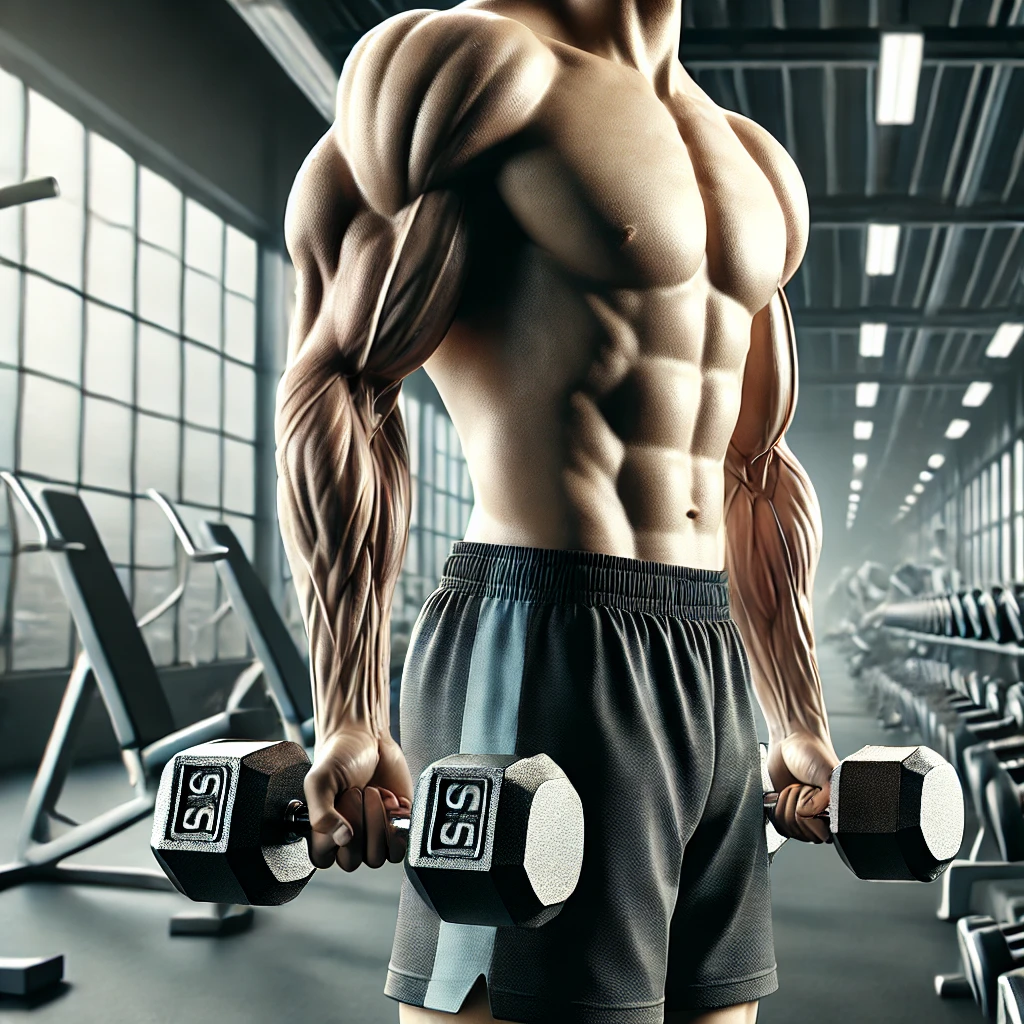Last Updated on September 30, 2022
Building strong and defined biceps isn’t just about aesthetics—it’s about boosting upper-body strength, enhancing functionality in daily tasks, and improving overall fitness. One exercise that particularly targets the inner biceps is the Standing Inner Biceps Curl with Dumbbells. This highly effective yet simple movement isolates the biceps, helping to sculpt and define them.
This comprehensive guide delves into everything you need to know about the Standing Inner Biceps Curl, including its benefits, proper technique, common mistakes, variations, and how to integrate it into your workout routine for maximum results.
Benefits of the Standing Inner Biceps Curl with Dumbbells
- Inner Biceps Focus: The twisting motion in this exercise emphasizes the inner part of the biceps brachii, enhancing the peak and definition of the muscle.
- Improved Arm Strength: Regularly performing this curl strengthens the arms, making everyday tasks like lifting and carrying easier.
- Core Stability: Since this exercise requires you to stand and maintain good posture, your core muscles are engaged for stability.
- Enhanced Grip Strength: Holding dumbbells and controlling their movement helps improve grip strength, which is vital for various other exercises.
- Accessibility: All you need are a pair of dumbbells, making it a convenient option for both home and gym workouts.
Step-by-Step Instructions
- Setup:
- Stand with your feet shoulder-width apart.
- Keep your knees slightly bent to avoid locking them.
- Draw your abs in and maintain a straight posture.
- Grip the Dumbbells:
- Grasp a dumbbell in each hand with a neutral grip (palms facing each other).
- Let your arms hang straight by your sides, fully extended.
- The Curl:
- Begin by curling your arms upward and outward in a wide arc.
- Rotate your wrists so your palms face up and slightly outwards as you lift.
- Focus on keeping the motion controlled and deliberate, avoiding any swinging or jerking.
- The Peak Contraction:
- At the top of the movement, squeeze your biceps for a brief moment to maximize contraction.
- Ensure your forearms align with your shoulders at the peak.
- Lower the Dumbbells:
- Slowly reverse the movement, lowering the dumbbells back to the starting position.
- Keep your palms gradually rotating back to the neutral position as you descend.
- Avoid letting gravity take over; the descent should be as controlled as the lift.
Tips for Proper Form
- Engage Your Core: Keep your core tight throughout the movement to prevent swaying or using momentum.
- Control the Weight: Lift and lower the dumbbells slowly to maintain tension in the biceps and prevent injury.
- Neutral Spine: Avoid arching or rounding your back; maintain a neutral spine to protect your lower back.
- Elbow Position: Keep your elbows close to your torso and prevent them from flaring out excessively.
- Breathing: Exhale as you lift the weights and inhale as you lower them.
Common Mistakes to Avoid
- Using Momentum: Swinging the dumbbells or using your back to lift defeats the purpose of the exercise. Focus on isolating the biceps.
- Incorrect Wrist Rotation: Ensure a smooth rotation of the wrists for proper engagement of the inner biceps. Skipping this step may shift the focus to other muscles.
- Overloading: Lifting weights that are too heavy can compromise form and increase the risk of injury. Start light and progress gradually.
- Locked Knees: Keeping your knees locked puts unnecessary strain on your lower back. Maintain a slight bend for stability.
- Rushing Through Reps: Performing the exercise too quickly reduces the effectiveness. Slow, controlled movements ensure optimal muscle engagement.
Variations of the Standing Inner Biceps Curl
Adding variety to your workout can help target the biceps from different angles and keep your routine interesting. Here are some variations:
- Alternating Inner Biceps Curl:
- Perform the curl with one arm at a time while keeping the other arm stationary.
- This increases the focus on each arm and improves balance and coordination.
- Seated Inner Biceps Curl:
- Sit on a bench with your feet flat on the ground. This removes the need for core stability and allows you to focus entirely on your biceps.
- Inner Biceps Curl with Resistance Bands:
- Use resistance bands instead of dumbbells for a different type of tension throughout the movement.
- Incline Inner Biceps Curl:
- Perform the exercise on an incline bench to increase the range of motion and target the lower portion of the biceps.
- Hammer Curl to Inner Curl:
- Start with a hammer curl and rotate into an inner curl midway through the movement to engage multiple parts of the biceps.
Integrating the Exercise into Your Routine
The Standing Inner Biceps Curl is best performed as part of a structured arm or upper-body workout. Here’s an example:
Sample Arm Workout
- Warm-up: Jump Rope or Arm Circles (5 minutes)
- Standing Inner Biceps Curl: 3 sets of 12-15 reps
- Hammer Curls: 3 sets of 10-12 reps
- Tricep Dips: 3 sets of 12-15 reps
- Overhead Shoulder Press: 3 sets of 10-12 reps
- Cool-down: Stretching (5-10 minutes)
Progression and Scaling
- Beginners: Start with lighter weights and focus on mastering the form before increasing resistance.
- Intermediate: Gradually increase the weight and add more reps or sets as your strength improves.
- Advanced: Incorporate techniques like drop sets, supersets, or tempo variations to challenge the muscles further.
Complementary Exercises
Pairing the Standing Inner Biceps Curl with other bicep and arm exercises can create a balanced workout:
- Concentration Curls: For isolating the biceps and enhancing the mind-muscle connection.
- Chin-ups: A compound movement that targets the biceps and back.
- Preacher Curls: Ideal for targeting the lower biceps.
- Reverse Curls: Focuses on the brachialis and forearm muscles for overall arm development.
FAQs
Q: How often should I perform the Standing Inner Biceps Curl? A: Include it in your arm workout 1-2 times a week, ensuring at least 48 hours of rest between sessions to allow muscle recovery.
Q: Can I do this exercise at home? A: Absolutely! All you need are dumbbells, making it an excellent addition to your home workout routine.
Q: What weight should I use? A: Choose a weight that challenges you but allows you to maintain proper form. Start light and gradually increase as your strength improves.
Q: Is this exercise suitable for beginners? A: Yes, it’s beginner-friendly. Just focus on proper form and start with lighter weights.
Conclusion
The Standing Inner Biceps Curl with Dumbbells is a highly effective exercise for building strength and definition in the inner biceps. By mastering the technique and incorporating it into your workout routine, you’ll be well on your way to achieving stronger, more sculpted arms. Remember to pair it with complementary exercises, follow a balanced training program, and prioritize proper form for the best results.









